Saturday 6 February 2021
#eat / drink
The true origins of the legendary Fettuccine Alfredo.
Let's face it: Alfredo fettuccine is not a traditional Roman dish.
But, due to their simplicity and the fact that they are so famous in English-speaking countries (together with perhaps the most popular "spaghetti with meatballs"), we have no qualms about including them in the elite of historically Roman (or at least Italian) dishes, regardless of who this Alfredo is).
Butter and Parmesan, so dear to students who are temporarily lacking in creativity. But, if instead of industrial fettuccine we used homemade ones ... if instead of the "mix of grated cheese" we used simple Parmesan aged 24 months ... if instead of the "whey butter derivative" we used a good cream butter from alpine milk ...
We add a little manual skill to whisk them (if we can do it with a cheese and pepper it won't scare us) and we will get an excellent result.
Branding something like "pasta, butter and parmesan" might seem useless as doing it with "fried eggs with bacon"; but we still appreciate the attempt of the "Alfredi" (in Rome there are two who have been competing for the authorship of the dish for years).
Alfredo Di Lelio, born in September 1883 in Rome in Vicolo di Santa Maria in Trastevere, began working as a boy in the small restaurant opened by his mother Angelina in Piazza Rosa, a small open space (disappeared around 1910) that existed before the construction of the Galleria Colonna (now Galleria Sordi).
1908 was an unforgettable year for Alfredo Di Lelio: he was born, in fact, his son Armando and at the same time saw the light in this restaurant in Piazza Rosa his "fettuccine", which later became famous all over the world.
Alfredo Di Lelio invented his "fettuccine" to give a natural tonic, based on butter and Parmesan, to his wife Ines, prostrate following the birth of her first child. The dish of "fettuccine" was a family success even before becoming the dish that made Alfredo Di Lelio known and popular, a character with "Umberto mustache" and corns on his hands by dint of mixing his "fettuccine" in front of more and more customers.
In 1914, following the closure of said restaurant due to the disappearance of Piazza Rosa due to the construction of the Galleria Colonna, Alfredo Di Lelio decided to open his restaurant "Alfredo" in Rome which he managed until 1943, and then sold the business to third parties.
But Alfredo Di Lelio's absence from the gastronomic scene was entirely transitory. In fact, in 1950 he resumed control of his family tradition and opened, together with his son Armando, the restaurant "Il Vero Alfredo" (also known abroad as "Alfredo di Roma") in Piazza Augusto Imperatore.
With the launch of the new restaurant, Alfredo Di Lelio achieved great success with the public and customers in the years of the "dolce vita". Success, which still attracts a continuous flow of tourists from all over the world to the restaurant to taste the famous "fettuccine all'Alfredo" with double butter.
In particular, the fettuccine are served to customers with 2 "golden cutlery": a fork and a golden spoon given to Alfredo in 1927 by the two well-known American actors M. Pickford and D. Fairbanks (as a sign of gratitude for the hospitality).
Alfredo was a great friend of Ettore Petrolini, whom he met in the early 1900s in a meeting between boys from the Trastevere district and boys from the Monti district (including Petrolini). It was Petrolini himself who one day, already a famous actor, going to visit his friend Alfredo, after hugging him, said to him "Alfré now let me see what you know." Alfredo after having performed in his typical "show" that saw him mixing the steaming noodles with his golden cutlery in front of the customers, approached his friend Ettore who commented "thank goodness you didn't become an actor because it's a place for everyone e due nun was" and advised Alfredo to wallpaper the walls of the restaurant with his photos together with the most famous customers.
The "Il Vero Alfredo" restaurant is listed in the Register of "Historic Shops of Excellence" of the Municipality of Rome.
Today Alfredo's granddaughter Ines Di Lelio is in charge of handing down the tradition.
In the links: the two restaurants (Il vero Alfredo and Alfredo alla Scrofa) and the recipe.
But, due to their simplicity and the fact that they are so famous in English-speaking countries (together with perhaps the most popular "spaghetti with meatballs"), we have no qualms about including them in the elite of historically Roman (or at least Italian) dishes, regardless of who this Alfredo is).
Butter and Parmesan, so dear to students who are temporarily lacking in creativity. But, if instead of industrial fettuccine we used homemade ones ... if instead of the "mix of grated cheese" we used simple Parmesan aged 24 months ... if instead of the "whey butter derivative" we used a good cream butter from alpine milk ...
We add a little manual skill to whisk them (if we can do it with a cheese and pepper it won't scare us) and we will get an excellent result.
Branding something like "pasta, butter and parmesan" might seem useless as doing it with "fried eggs with bacon"; but we still appreciate the attempt of the "Alfredi" (in Rome there are two who have been competing for the authorship of the dish for years).
Alfredo Di Lelio, born in September 1883 in Rome in Vicolo di Santa Maria in Trastevere, began working as a boy in the small restaurant opened by his mother Angelina in Piazza Rosa, a small open space (disappeared around 1910) that existed before the construction of the Galleria Colonna (now Galleria Sordi).
1908 was an unforgettable year for Alfredo Di Lelio: he was born, in fact, his son Armando and at the same time saw the light in this restaurant in Piazza Rosa his "fettuccine", which later became famous all over the world.
Alfredo Di Lelio invented his "fettuccine" to give a natural tonic, based on butter and Parmesan, to his wife Ines, prostrate following the birth of her first child. The dish of "fettuccine" was a family success even before becoming the dish that made Alfredo Di Lelio known and popular, a character with "Umberto mustache" and corns on his hands by dint of mixing his "fettuccine" in front of more and more customers.
In 1914, following the closure of said restaurant due to the disappearance of Piazza Rosa due to the construction of the Galleria Colonna, Alfredo Di Lelio decided to open his restaurant "Alfredo" in Rome which he managed until 1943, and then sold the business to third parties.
But Alfredo Di Lelio's absence from the gastronomic scene was entirely transitory. In fact, in 1950 he resumed control of his family tradition and opened, together with his son Armando, the restaurant "Il Vero Alfredo" (also known abroad as "Alfredo di Roma") in Piazza Augusto Imperatore.
With the launch of the new restaurant, Alfredo Di Lelio achieved great success with the public and customers in the years of the "dolce vita". Success, which still attracts a continuous flow of tourists from all over the world to the restaurant to taste the famous "fettuccine all'Alfredo" with double butter.
In particular, the fettuccine are served to customers with 2 "golden cutlery": a fork and a golden spoon given to Alfredo in 1927 by the two well-known American actors M. Pickford and D. Fairbanks (as a sign of gratitude for the hospitality).
Alfredo was a great friend of Ettore Petrolini, whom he met in the early 1900s in a meeting between boys from the Trastevere district and boys from the Monti district (including Petrolini). It was Petrolini himself who one day, already a famous actor, going to visit his friend Alfredo, after hugging him, said to him "Alfré now let me see what you know." Alfredo after having performed in his typical "show" that saw him mixing the steaming noodles with his golden cutlery in front of the customers, approached his friend Ettore who commented "thank goodness you didn't become an actor because it's a place for everyone e due nun was" and advised Alfredo to wallpaper the walls of the restaurant with his photos together with the most famous customers.
The "Il Vero Alfredo" restaurant is listed in the Register of "Historic Shops of Excellence" of the Municipality of Rome.
Today Alfredo's granddaughter Ines Di Lelio is in charge of handing down the tradition.
In the links: the two restaurants (Il vero Alfredo and Alfredo alla Scrofa) and the recipe.

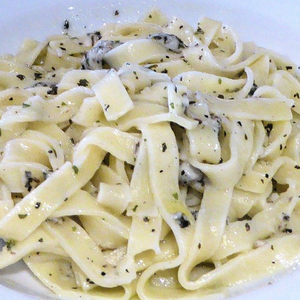
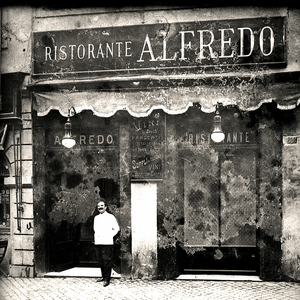
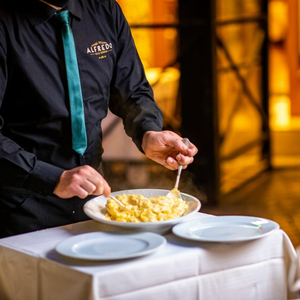
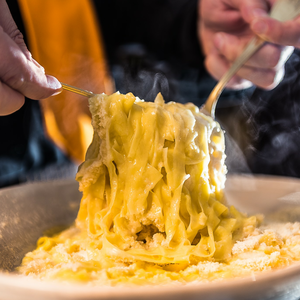
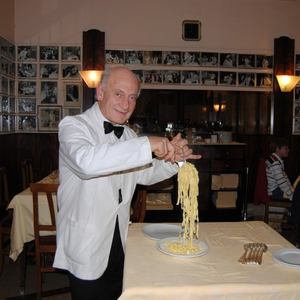
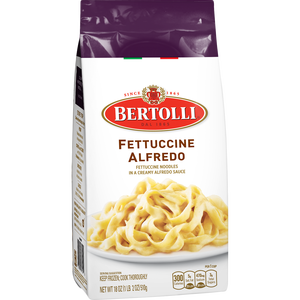
 The X best Peruvian restaurants in Rome. Where to eat cheviche according to the tradition of an underrated cuisine.
The X best Peruvian restaurants in Rome. Where to eat cheviche according to the tradition of an underrated cuisine. On the ugliness and uselessness of restaurant websites. Dedicated to restaurateurs (Roman and not).
On the ugliness and uselessness of restaurant websites. Dedicated to restaurateurs (Roman and not). The X best cod fillets in Rome. Where to eat the legendary fried fish.
The X best cod fillets in Rome. Where to eat the legendary fried fish. [EVENT CANCELED] Sicilian festival in Piazza San Giovanni Bosco. From 22 to 25 October 2020.
[EVENT CANCELED] Sicilian festival in Piazza San Giovanni Bosco. From 22 to 25 October 2020.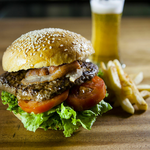 Street Food in Rome. Three appointments in September 2020.
Street Food in Rome. Three appointments in September 2020. The best X arrosticini in Rome. Where to eat Abruzzese "rustelle".
The best X arrosticini in Rome. Where to eat Abruzzese "rustelle".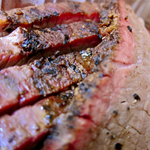 The best X smoked BBQ. Where to eat American smoked meat (in Rome and in Italy).
The best X smoked BBQ. Where to eat American smoked meat (in Rome and in Italy). DOCG and DOC wines from the province of Rome (and a bit of history).
DOCG and DOC wines from the province of Rome (and a bit of history). The X best "vaccinara" oxtails of Rome. Where to eat the queen of the fifth quarter.
The X best "vaccinara" oxtails of Rome. Where to eat the queen of the fifth quarter.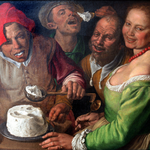 The best X Y in Rome. That is where to eat Y.
The best X Y in Rome. That is where to eat Y. Small guide to restaurants in Rome: Asian cuisine
Small guide to restaurants in Rome: Asian cuisine Farmers' markets reopen: list, map and timetables.
Farmers' markets reopen: list, map and timetables.